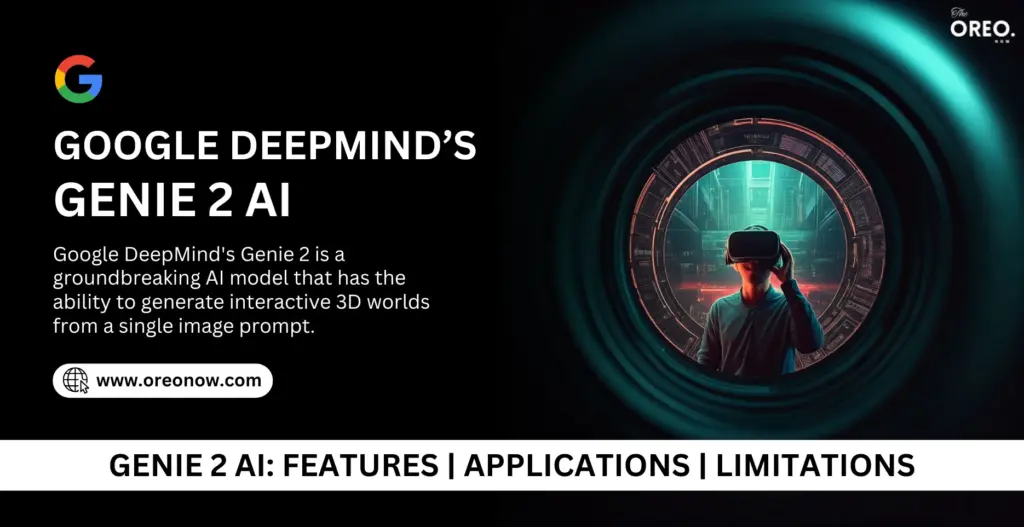Google DeepMind’s Genie 2 AI Can Generate 3D Worlds from a Single Image

Google DeepMind’s Genie 2 AI is indeed a groundbreaking AI model that has the ability to generate interactive 3D worlds from a single image prompt. This technology has the potential to revolutionize various fields, including gaming, animation, and AI agent training.
By harnessing the power of advanced machine learning, Genie 2 can generate stunningly realistic virtual environments from simple text prompts or images. These worlds aren’t static backdrops; they are dynamic, interactive spaces where users can roam freely, manipulate objects, and engage with AI-powered characters.
How Does Genie 2 AI Work?
Genie 2 employs advanced AI techniques to understand and interpret human input. It then leverages this understanding to construct intricate 3D environments, complete with realistic physics, lighting, and object interactions.
Features of Genie 2 AI
Google DeepMind’s Genie 2 is a groundbreaking AI model that pushes the boundaries of generative AI. Here are some of them:
Key Features:
- Image-to-3D World Generation: Genie 2 can transform a simple image prompt into a fully realized, interactive 3D world.
- Dynamic and Interactive Environments: The generated worlds are not static; they are dynamic, allowing users to explore and interact with objects within the scene.
- Realistic Physics Simulation: The model simulates real-world physics, enabling objects to behave realistically when interacted with.
- Character Animation: Characters within the generated worlds can move and behave in a lifelike manner, responding to user input and environmental stimuli.
- Long-Term Consistency: Genie 2 can maintain a consistent world state over extended periods, ensuring a seamless and coherent experience.
- Emergent Behaviors: The model can exhibit emergent behaviours, meaning it can generate unexpected and creative outcomes beyond its initial training data.
Technical Innovations:
- Spatiotemporal Video Tokenizer: This component breaks down videos into spatial and temporal elements, capturing intricate details for realistic rendering.
- Latent Action Model: Genie 2 learns controllability from latent actions, enabling it to generate fluid and logical frame-by-frame sequences without explicit annotations.
- Dynamic Environment Generation: By combining an autoregressive dynamics model with scalable parameters, Genie 2 creates environments that evolve naturally in response to user interactions.
Potential Applications:
- Game Development: Rapid prototyping of game environments and levels.
- Film and Animation: Creating realistic and immersive virtual sets and animations.
- AI Research: Training AI agents in complex and dynamic virtual environments.
- Virtual and Augmented Reality: Enhancing VR and AR experiences with realistic and interactive worlds.
- Education and Training: Developing interactive simulations for training and education purposes.
Limitations of Genie 2 AI:
While Genie 2 is a significant advancement, it still has limitations:
- Limited World Size and Complexity: The current version is best suited for smaller-scale environments.
- Occasional Inconsistencies: The model may sometimes generate unrealistic or inconsistent elements within the world.
- Computational Demands: Generating and rendering complex 3D worlds requires significant computational resources.
As AI technology continues to evolve, we can expect Genie 2 and similar models to become even more powerful and versatile. This could lead to a future where virtual worlds are indistinguishable from reality, opening up a wide range of possibilities for entertainment, education, and scientific research.
It represents a significant step forward in AI-powered world generation, and its potential applications are vast and exciting. With advancements like Genie 2, the possibilities for AI-generated content are truly limitless. As we continue to explore the potential of this technology, we can anticipate a future where AI plays an integral role in shaping our digital experiences.



